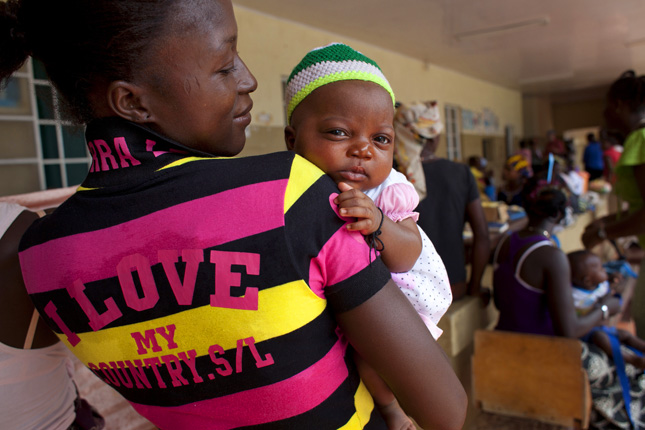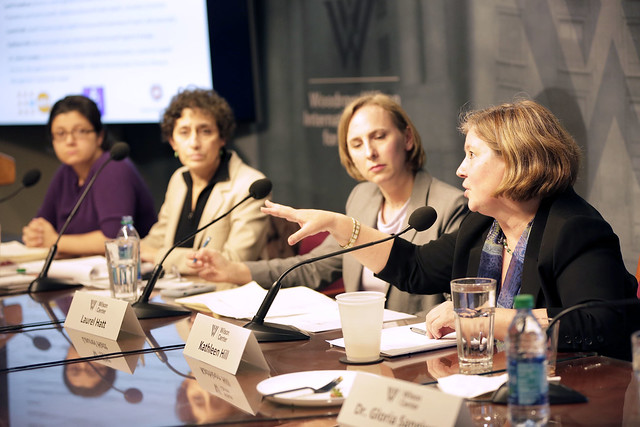-
‘The Lancet’ on Achieving Maternal Health Goals in the SDG Era: Tackling Diversity and Divergence
November 29, 2016 By Nancy Chong
Between 1990 and 2015, there was an incredible 44 percent decrease in global maternal mortality rates. But these impressive gains still fell short of the Millennium Development Goal of reducing the global maternal mortality ratio by three quarters.
One reason is the increasing diversity in causes of poor maternal health, as the easiest and most impactful issues are addressed in many places. Although there has been a reduction in the number of maternal deaths caused by direct complications like hemorrhage, there are a growing number of deaths related to indirect causes and preexisting conditions, like malaria, asthma, and obesity.
Another challenge is what The Lancet, in a new special series, calls “divergence:” major inequities within and across countries that mask pockets of women with very poor access to services and correspondingly poor health indicators.
The Lancet series comes at the dawn of the Sustainable Development Goals (SDGs) era and follows in the footsteps of a similar issue of the journal that took stock of the challenges to maternal survival 10 years ago. “What is different about what we’re portraying here from what we talked about in the 2006 Lancet series on maternal health is essentially that we are not giving any kind of universal solution to all of these barriers,” said Marge Koblinsky, the former senior maternal health advisor for the U.S. Agency for International Development, at the Wilson Center. “These barriers are within countries and their own infrastructures, their own divergence and diversity.”
The Maternal Health Initiative, United Nations Population Fund, and Maternal Health Task Force convened maternal and newborn health experts for a panel discussion on the series’ conclusions and five priorities to address gaps in access to and quality of care on October 28.
Too Little and Too Much
Progress in maternal health has been uneven. “In 1990, the pooled maternal mortality ratio for the 10 countries with the highest levels was a 100 times greater than [the rate] in the 10 countries with the lowest levels,” said Clara Calvert, an assistant professor at the London School of Hygiene and Tropical Medicine. “By 2013, the relative gap had doubled to 200 times greater.”
The Lancet explained the twin concerns of diversity and divergence using two frameworks. The first, “too little, too late,” centers around the more traditional lack of evidence-based guidelines, trained providers, and proper facilities. Though this framework has traditionally been associated with low-income countries, the research team also found these issues in high and middle-income countries with socio-demographic disparities.
“We must focus more on a much more humble engagement with local actors”The second framework, “too much, too soon,” focuses on problems related to over-medicalization and over-intervention in health systems. Traditionally, these problems are seen in high-income countries where there is weaker adherence to evidence-based guidelines, fear of malpractice, and an overreliance on technology. However, these problems are also increasingly being seen in middle and lower-middle-income countries for particular clinical practices.
The use of antibiotics after vaginal delivery, for example, even when no problems are encountered, is not recommended, yet they are administered to more than half of women in lower-middle-income countries.
The growing rate of unnecessary and dangerous Cesarean sections is another example of too much, too soon. Researchers found that low-income countries have C-section rates of less than 10 percent, while middle-income countries have rates in the 40 to 50 percent range, said Suellen Miller, the director of the Safe Motherhood Program and professor at the University of California, San Francisco.
Changing these practices and others like it may require a change in what’s measured and incentivized. “The Millennium Development Goal-era metrics are inadequate,” said Kathleen Hill, the maternal health lead for the USAID-supported Maternal Child Survival Program.
“We must focus more on a much more humble engagement with local actors about what are the measures that these actors need to actually do their work,” Hill said. “Local actors, including the clients, are the only ones who really deeply know their systems.” Solving problems like lack of adherence to clinical guidelines, for example, clearly requires a better understanding of local conditions and contexts.
Sustainable Financing
Tight budgets and large-scale changes to health systems are also a major challenge to closing the final gaps. Laurel Hatt of Abt Associates and the USAID-supported Health Finance and Governance Project challenged the audience to think about prioritization and evidence-based planning around spending.
Hatt highlighted four major points. First, budget constraints are hindering access to quality care. On the demand side, emergency obstetric care is still the leading cause of “catastrophic expenditures,” and from the supply side, there is a shortage of funds available to pay providers.
From passive to strategic purchasingSecond, not all countries are filling the gaps left by donor withdrawals. “What could happen if we don’t strengthen the underlying health financing systems is more reliance on out-of-pocket spending and worse access,” Hatt said. Governments must take ownership of their maternal health programs and services to ensure they are sustainable even when donors step out of the picture, she said. Whether it means establishing insurance programs or creating subsidy pools, sustainable financing is essential.
Third, the drive to capture efficiencies in financing must focus on better quality services. Too often quality and efficiency are put on opposite sides of a spectrum, but “we need to shift that paradigm and focus on how better quality actually promotes better efficiency,” Hatt said. If donors invested more in patient-centered care, integrated services, and efficient and effective referral systems, higher quality and more efficient service plans would reach women worldwide.
Lastly, Hatt encouraged moving from a “passive” purchasing model for health services to “strategic” purchasing, a more active, intentional approach that ideally reaches marginalized groups more effectively and efficiently by basing decisions on interventions and providers on data and evidence.
Putting Women at the Center
The Lancet puts forward five priorities for the SDG era: quality, equity, strengthening entire health systems, sustainable financing, and collecting better evidence. To meet these goals, the maternal health community must do a better job understanding how women seek care, said Elena Ateva, a maternal and newborn health policy and advocacy advisor for the non-profit White Ribbon Alliance.
“[It] starts with the conversation a woman has with her provider,” Ateva said, “then with the community and the providers and policymakers coming together and discussing the vital changes that need to happen at that level, and then it happens when communities come together to advocate for improved services at the local and national level.”
Today’s maternal health challenges are truly unique to each individual, said Dr. Gloria Sangiwa, a psychiatrist, medical practitioner, and senior director of technical quality and innovation for Management Sciences for Health, a non-profit organization.
Whether it is “Janet,” a disabled 30-year-old mother of one from the Lira District of Uganda who could not get to, from, or even navigate within her local hospital because it was not wheelchair accessible, or “Wako,” a 34-year-old mother of three from the Mityana District who could not deliver in privacy because of lack of space, the unmet needs are many and varied, Ateva said.
“We need a different level of actually listening and respect, including to people who are not experts at all, except perhaps…about their own lives, in their own settings, in their own aspirations,” said Freedman.
Event Resources:
Source: The Lancet, World Health Organization.
Photo Credit: A health worker in Sierra Leone, August 2013, courtesy of H6 Partners.
Topics: demography, development, Dot-Mom, featured, From the Wilson Center, gender, global health, health systems, maternal health, MDGs, population, poverty, SDGs, UNFPA, USAID, video
 A Publication of the Stimson Center.
A Publication of the Stimson Center.




